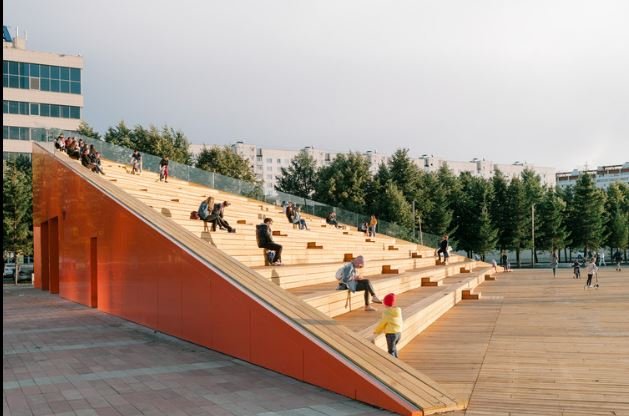The Integration of Public Spaces in Urban Building Designs
The integration of public spaces in urban building designs is transforming cities into vibrant, livable environments. As urban areas become increasingly dense, the need for accessible, multifunctional public spaces within building designs is paramount. This trend addresses social, economic, and environmental challenges, promoting community well-being and sustainable urban development.

The Integration of Public Spaces in Urban Building Designs
1. Enhancing Community Interaction
Public spaces within urban buildings foster community interaction and social cohesion. By incorporating plazas, parks, and communal areas into building designs, architects create opportunities for residents and visitors to connect. These spaces serve as hubs for social activities, cultural events, and recreational opportunities, enhancing the quality of urban life. In turn, this fosters a sense of belonging and community pride.
2. Promoting Sustainable Urban Development
Integrating public spaces in urban building designs promotes sustainable development. Green roofs, vertical gardens, and open courtyards contribute to environmental sustainability by reducing heat islands, improving air quality, and supporting biodiversity. These elements also provide residents with access to nature, which is essential for mental and physical well-being. Sustainable public spaces encourage eco-friendly behaviors, such as walking and cycling, further reducing urban carbon footprints.
3. Economic Benefits of Public Spaces
The integration of public spaces within urban buildings offers significant economic benefits. Vibrant public areas attract businesses, tourism, and investment, boosting local economies. Retail and dining establishments thrive in well-designed public spaces, benefiting from increased foot traffic and customer engagement. Additionally, property values in areas with well-integrated public spaces tend to be higher, providing economic incentives for developers and city planners.
4. Designing Multifunctional Spaces
Modern urban building designs emphasize multifunctionality in public spaces. Designers create versatile areas that can adapt to various uses, from markets and exhibitions to sports and leisure activities. This adaptability ensures that public spaces remain dynamic and relevant, catering to the diverse needs of urban populations. Multifunctional public spaces maximize the utility of limited urban land, providing residents with versatile environments that enrich their daily lives.
5. Case Studies of Successful Integrations
Successful integrations of public spaces in urban building designs provide valuable insights and inspiration. The High Line in New York City transformed an old railway into a linear park, showcasing the potential of adaptive reuse. Similarly, the Marina Bay Sands in Singapore features a sky park that serves as a public oasis amidst the urban landscape. These projects demonstrate the transformative impact of thoughtfully integrated public spaces on urban environments.
6. Challenges and Solutions
Integrating public spaces in urban building designs comes with challenges, such as land scarcity, funding, and maintenance. Innovative solutions are essential to overcome these obstacles. Public-private partnerships can fund the development and upkeep of public spaces, ensuring their long-term viability. Creative design approaches, such as vertical and rooftop public areas, maximize limited space while providing accessible, attractive communal areas for urban dwellers.
Fostering Social Equity Through Public Spaces
Public spaces in urban building designs play a crucial role in fostering social equity. By providing accessible and inclusive spaces, cities can bridge social divides and offer opportunities for all residents to engage in communal activities. Well-designed public spaces cater to diverse populations, including children, elderly individuals, and people with disabilities. This inclusivity promotes social equity and ensures that everyone can benefit from the advantages of urban public spaces.
Conclusion
The integration of public spaces in urban building designs is essential for creating vibrant, sustainable, and equitable cities. By enhancing community interaction, promoting sustainability, and offering economic benefits, these spaces improve urban life. Multifunctional designs and innovative solutions address challenges, ensuring the successful incorporation of public spaces in urban environments. As cities continue to grow, the thoughtful integration of public spaces within building designs will play a pivotal role in shaping the future of urban living.



